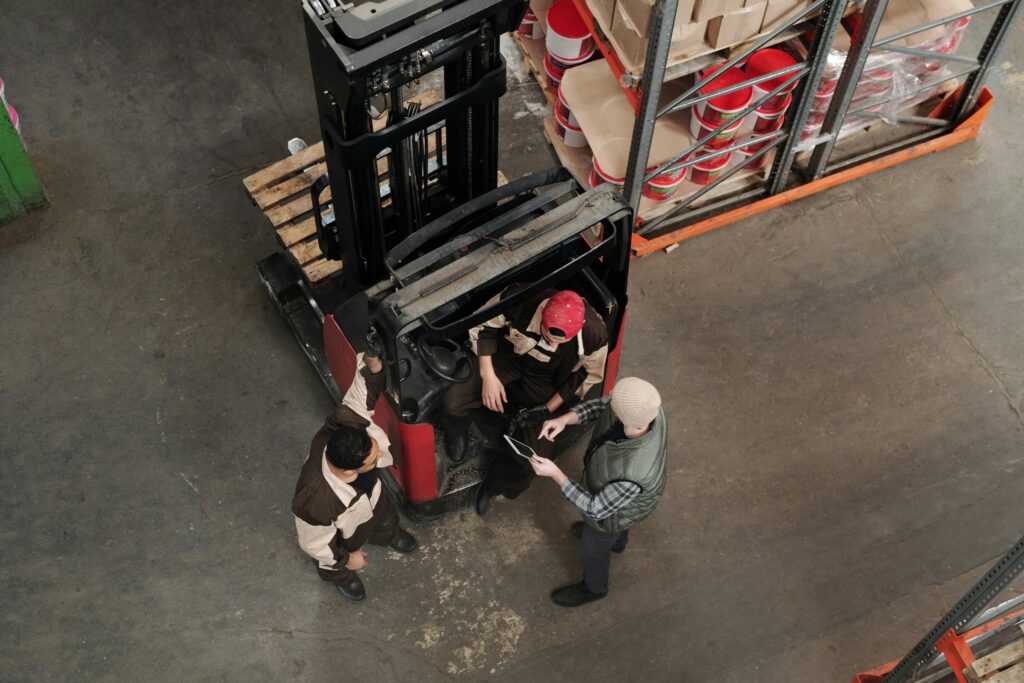
Forklifts are essential machines used in warehouses, construction sites, and factories to move heavy loads efficiently. They come with a few different parts, however — and understanding their parts and components is crucial for safe and effective use.
This blog will cover the fundamental parts of a forklift.
Key Parts and Components of a Forklift
- Mast) The mast is the vertical assembly that lifts and lowers the load. It includes rails and chains that allow the upward and downward movement. The masts, however, come in different forms depending on the height and weight requirements of the job, such as simplex (one-stage), duplex (two-stage), or triplex (three-stage) masts.
- Forks) The forks (aka tines), are the metal arms that slide underneath the loads to lift and move them. Forks are adjustable to be able to to lift and carry different sizes of loads. They can also be tilted to be able to secure the loads during lifting or travel. As a reminder, always make sure to properly place your forks under your load to prevent tipping or damaging.
- Carriage) The carriage is the support platform to which the forks are attached. It moves along the mast using rollers or bushings and is essential in controlling the forks during lifting, lowering, and tilting.
- Overhead Guard) The overhead guard is the metal canopy designed to protect the operator from falling objects. While it does not offer total protection, it does serve as a critical barrier during hazardous environments.
- Counterweight) The counterweight is located at the back of the forklift, balancing the load carried by the forks. In electric forklifts, the battery often serves as the counterweight, while internal combustion forklifts use a cast-iron counterweight.
- Power Source) Forklifts run on different power sources, depending on the type of forklift. Electric forklifts are powered by large rechargeable batteries, while internal combustion forklifts use diesel, gasoline, or propane engines. Similar to a standard car, the forklift’s power source affects performance, fuel economy, and emission levels.
- Tilt Cylinders) Tilt cylinders are the hydraulic devices that tilt the mast forward or backward. They help stabilize your loads while you’re traveling and they ensure smooth lifting and placing of materials.
- Hydraulic Controls) Forklifts rely on hydraulic systems to operate the mast, forks, and tilt mechanisms. Hydraulic levers are generally located near the operator’s seat and control movements – enabling precise and controlled operation.
- Steering System) Most forklifts have rear-wheel steering, which allows for greater maneuverability in tight spaces. This steering system helps operators make sharp turns in warehouse aisles but requires careful attention, as rear-wheel steering feels different from standard front-wheel steering in cars.
Understanding the parts and components of a forklift, is essential for safe and efficient forklift use. However, to truly understand how to safely and efficiently operate a forklift, you should partake in forklift training, as that offered at American Forklift Certification, Inc., as well as earn your forklift certification. To learn more about forklift training and how you can earn your forklift certification, contact American Forklift Training, Inc. today!
